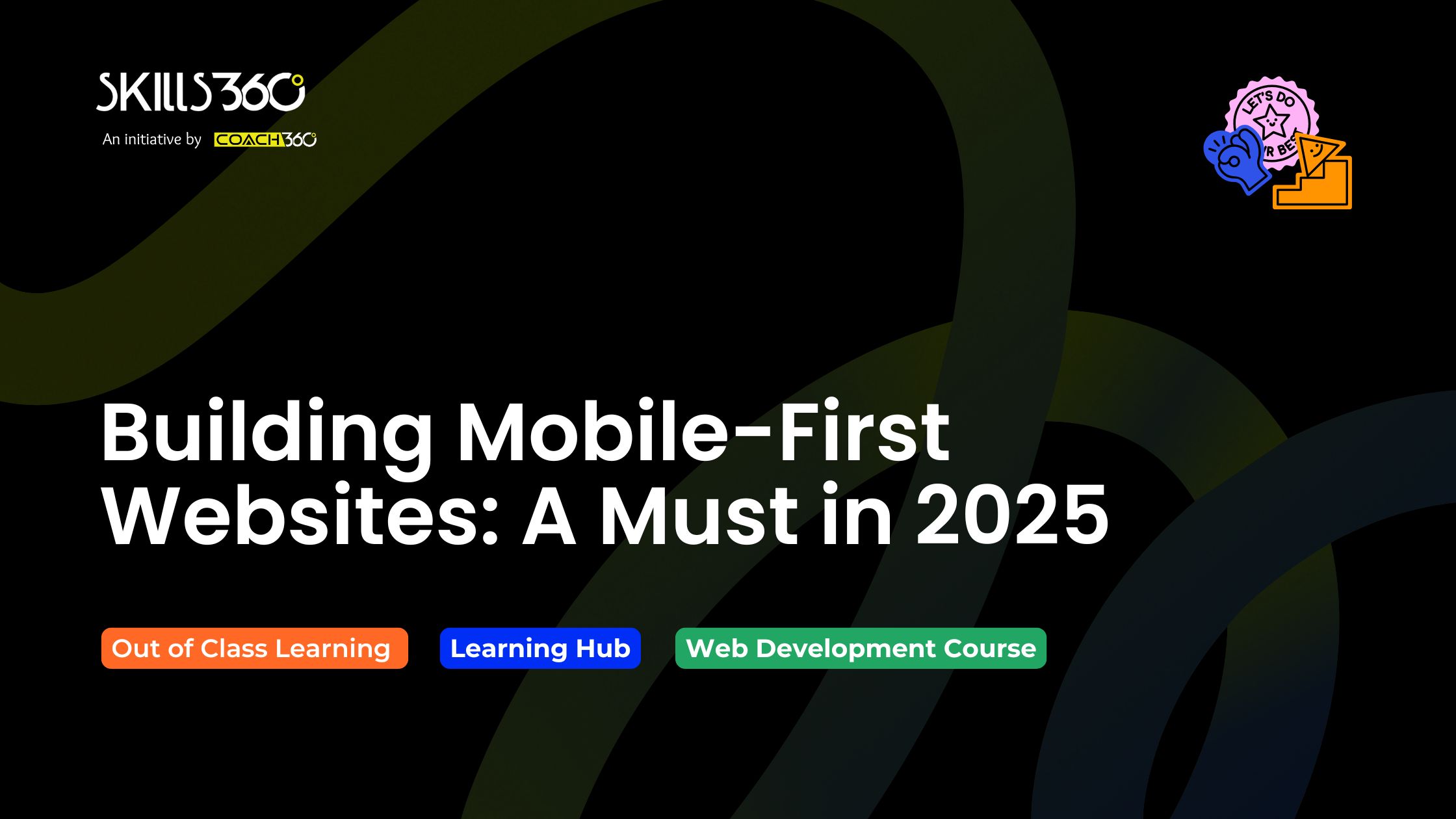- Featured article
- People at Skills360 15 - May 2025 | 8 min read

In the digital age of 2025, having a strong online presence isn’t just a fun option anymore - it’s absolutely essential. However, as time goes on, having a simple website is no longer enough. Mobile devices now account for over 60% of all web traffic.
Just this statistic emphasizes how important it is for companies and developers to give mobile-first design top priority when creating websites. But why is mobile-first so crucial in 2025, and what does it actually mean?
Mobile-first design, actually, refers to the design and building of sites inwardly beginning from mobile devices to the tablets, and desktops. It sounds like responsive web design but shifts the focus one way: not adapting a desktop site to mobile but expanding a mobile site to much larger screens.
Smartphones are being used by more and more people for information access, communication, shopping, and searching. The typical consumer anticipates a flawless mobile experience whether they are ordering food, checking emails, or browsing social media. Users are likely to leave your site and never return if it loads slowly or is difficult to use on a mobile device.
Mobile-first indexing is the order of the day for Google, meaning it uses mostly the mobile version of content to index and rank. If your site does not work properly when viewed on mobile devices, this can hurt your search engine rankings. This is the term for designing your site such that it is aligned with Google's standards and offers enhanced visibility and discoverability.
Due to the fact that mobile-first websites are initially constructed with fewer assets and optimized code, they frequently load faster. Faster load times, lower bounce rates, and improved overall performance are all results of this lean foundation and are important for search engine ranking and user experience.
The mobile-first approach emphasizes simplicity and clarity in design. The small screen needs focused content, larger touch areas/buttons, and navigational elements that are easy to comprehend. This, in turn, also enhances accessibility for users with disabilities, promoting a more inclusive web design.
There are some basic principles for how to create a mobile-first website:
First, determine what content and actions are the essence of your website. What do you want your users to ultimately do? Read a blog, make a purchase, or schedule an appointment? When designing in mobile view, prioritize your users' primary will to act.
Use limited navigation and simple logic for a cleaner user experience. Use hamburger menus, sticky headings, or collapsible sections, to name just a few ways to preserve as much navigation as possible with a clean look.
Optimized images and videos are crucial for mobile media. Avoid large and heavy media files that are slow to download over mobile connections. Implement lazy loading to keep image and video downloads ahead of the current page load while ensuring quality browsing time.
Mobile-based interactions are based on touch, which means all buttons, links, and forms need to be easy to pull up with a finger. Use caution with small click areas and allow for enough space for additional clicks in case users are not extremely accurate with their taps.
Once you have the mobile design down, progressively enhance your design for tablets and desktops. Add features, build out the layout, and make richer visuals available only when screen space allows.
Mobile-first development can be streamlined with the aid of several tools and frameworks:
CSS Frameworks: Mobile-first principles are supported by Bootstrap 5, Tailwind CSS, and Foundation by default.
Flexible Layouts: They adjust to different screen sizes and can be made by developers using responsive grids like Flexbox and CSS Grid.
Media Queries: Conditional styling according to device attributes is made possible by CSS media queries.
Performance Testing: Programs like PageSpeed Insights and Google Lighthouse can be used to evaluate mobile performance and make recommendations for enhancements.
As technology continues to develop and mobile usage grows, mobile-first websites will continue to grow beyond the simple boundaries of “trends”. Companies that embrace mobile-first design are better prepared to engage users on the device where the majority of their usage takes place; their phones.
This is where Skills360 steps in, offering expert courses, workshops, and resources to help you with just about anything you encounter in mobile-first websites. In 2025 and beyond, the mobile-first approach isn’t just smart—it’s essential for digital success.


Get curated emails on out of class learning and work on your skills on your free time.